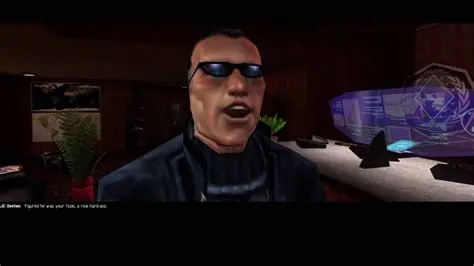So like I was trying to install Davinci resolve (an editing program) and while doing so it basically said “removing” followed by that appears to be everything installed on my computer
So I nope right out of there and I notice a bunch of important things are missing ex: the terminal, file manager, etc
So I just decided Maybe if I reboot everything will be a ok
And now on this screen and it won’t even let me enter my logic
This was the latest update of Kubuntu And idk what I did wrong or how I got here
I’ve only been using Kubuntu for probably about 4 months ish
Edit: please help
Edit 2: I got it working by reinstalling Kubuntu as suggested, Thank you for the help :>
Possibly this contains the reason why it broke:
https://wiki.debian.org/DontBreakDebian
I don’t know how you went about installing davinci, but if you added a repo or ppa that is incompatible with the version you had, apt would try to resolve it by removing everything incompatible.
Easiest way to fix it would be to reinstall Kubuntu and all the packages you had, while keeping your old home partition/folder. That way all your data, downloads and most of the configs will stay.
The installer used to have a checkbox for that somewhere, at least back in the day when I used Kubuntu. Afaik it would automatically detect that a home already exists, even if it is not on a seperate partition.
But just to be extra safe, I’d recommend just live booting some other OS and backing up your home to an external drive.
It’s really late for me right now but I’ll talk so my brother tomorrow about borrowing an extra hard drive and attempting this then
I fixed it It’s finally working It took me longer then I’m willing to admit but There’s no reinstall button in the installer
But to do it is to select manual partition and simply set the original partition as /
Amazingly everything is exactly how I left it I expected to have to reconfigure my settings n such but it managed to retain my previous configurations
It’s pretty normal to keep the configurations. An inplace reinstall will just put the system files back that got removed, then a reboot will bring them up with the configuration files left from before the reinstall as long as they were put in the right place for user-configured files.
Congrats! And good job not giving up!
Edit: please help
Best edit ever
You can go to
/var/log/apt/and read thehistory.logas it will contain every single package that you did install/remove.Based on that you can just restore it to working state by manually undoing the changes (removing installed, installing removed)
deleted by creator
I’m lucky enough to have other systems around to back up the drive with for the reinstall
I am absolutely going to fiqure out how it set up timeshift now
ctrl+alt+f1 get to tty and install back those uninstalled?
If apt suggested to uninstall these, there is a problem that may just occur again
The top answer here worked for me a long (~10 years) time ago, it might still work. Backup your home folder with a livecd before trying anything though.
There is not enough information in your post to help you. Here’s a preliminary list of questions that need an answer before anyone can give you a meaningful contribution.
Where did you get “Davinci resolve” from?
What instructions were you following to install it?
Did the installation finish?
Have you attempted to login using a text console?
Which version of Kubuntu were you using and which version of “Davinci resolve” were you attempting to install.
1, directly from the website Link
2, it was a basic installer except it was angry about some dependencies, specifically I installed libasound2 I believe and it started removing stuff
3, Nope
4, I’m not sure how
5, what ever the latest is
6, again what ever the latest is
1, directly from the website Link
I hope you’ve now understood why -on Linux- you should never try to install stuff like how you were used to on Windows. Unless, you 100% know what you’re doing.
I do But I could not find it in the intended ways
I infact did not 100% know what I was doing obviously lol despite having complete confidence that I did
I infact did not 100% know what I was doing obviously lol despite having complete confidence that I did
I know that feeling very well 🤣. I’m glad to hear that you were able to recover your system; at least this mistake only came at the cost of your time and not your system.
Have a good one 😉!
No. What? Why?
On your phone, do you search the software you want to install through your browser? After which, do you download the install script and try to run it?
No, of course not. Instead, you pay a visit to the accompanied software center. Searching, installing and upgrading all occur through that.
Similarly, on Linux, your chosen distro comes with a (or perhaps multiple) package manager(s) and a software center. Those should first and foremost be consulted. And for 99% of the cases; this is the intended, supposed and supported way of installing said software.
This should suffice for the sake of brevity. If you’ve still got questions, please feel free to ask them.
On your phone, do you search the software you want to install through your browser?
Yes. Not everything I have is installed through the Google store. I grew up in an era before walled-gardens.
Similarly, on Linux, your chosen distro comes with a (or perhaps multiple) package manager(s) and a software center. Those should first and foremost be consulted. And for 99% of the cases; this is the intended, supposed and supported way of installing said software.
I should clarify - I know what a package manager is. But you’re acting like one needs to have some expert skills to install things outside of the package manager. It’s generally preferred for a number of reasons but it’s not bad “per se” to install something outside of it.
Used to be a time where the install instructions were
./configure && make && make install…Yes. Not everything I have is installed through the Google store.
I understand from this, that it is implied, that the majority of what you have installed, has been done through the Google store though. By extension, I assume that -by default- you entrust installing software to the Google store. Hence, if all of the above is correct, then you actually don’t commit to ‘the Windows-way’ by default; but only by exception. Which is exactly my point.
But you’re acting like one needs to have some expert skills to install things outside of the package manager.
I feel you’re reading too much into it. In my first comment, I didn’t even mention package managers. In the second comment, I only wrote -and I quote- “Those should first and foremost be consulted. And for 99% of the cases; this is the intended, supposed and supported way of installing said software.”. I don’t see where expert skills are implied if one chooses to go outside of it. Please feel free to help me understand where I did.
It’s generally preferred for a number of reasons but it’s not bad “per se” to install something outside of it.
I never implied otherwise.
I hope you’ve now understood why -on Linux- you should never try to install stuff like how you were used to on Windows. Unless, you 100% know what you’re doing.
That’s pretty strong language and what I was responding to. Perhaps you were being hyperbolic.
Seems DaVinci Resolve does not have support for the latest Ubuntu’s yet.
https://forum.blackmagicdesign.com/viewtopic.php?f=21&t=202819
Know any good alternatives?
I have basic video editing needs, so I just use Kdenlive, which can do a lot of stuff.
For number 4 since it is very useful in such situations: press Ctrl + Alt + one of the F keys (usually one of 3,4,5) And to go back it is usually one of 1,2,7,8
It saved my ass many times.
Lol
Please install Davinci Resolve in a Podman/Docker container.
https://github.com/zelikos/davincibox
- install podman and distrobox
- clone the git repo
- place the davinci binary in there
- run setup.sh
And this looks like just sddm-breeze is missing
Will absolutely do
At login, press ctrl-alt-f4 or f5 or one of the F* keys until you get a text based login screen. (Might need to press enter on a blank screen for the login to appear)
Login as your user and password.
Sudo apt install kubuntu-desktop
What guide did you follow to install Davinci?
It probably contained something that removes a lot of stuff. Like replacing a dependency with a davinvi specific one, which uninstalled most of the system.
On your next OS reinstall, perhaps consider using an atomic distro. They’re WAY harder to break in this fashion - primarily because you can just roll them back to the previous known-good state.
Edit: genuinely curious what the downvotes are for - I thought atomics were quite popular here?
If you can intercept boot ( press a key to get to the grub menu or whatever… I haven’t used Ubuntu in a while so maybe it’s not so simple anymore) you may be able to enter rescue / single-user mode and let apt complete the changes and then revert them.
A clean reinstall may be easier depending on how much you’ve changed on the system. Easier isn’t always better, fix this and you’ll know how to do it again in the future.
Easiest fix:
1.- Download Fedora
2.- Install Fedora
3.- Never look back
4.- Be happy the rest of your life
Typical solution for you. Change distro.
Exactly. At least for me, Fedora has been flawless since version 36.









